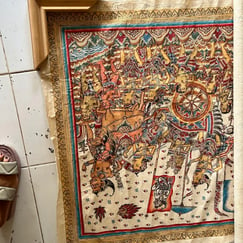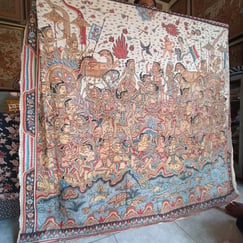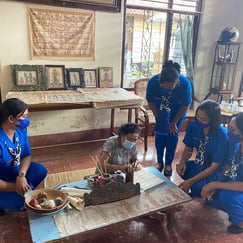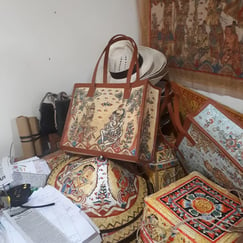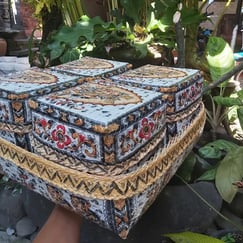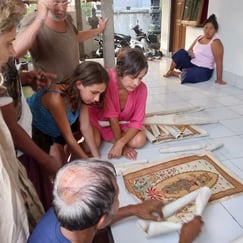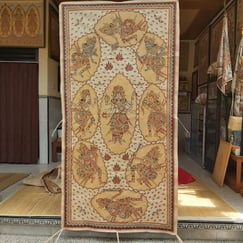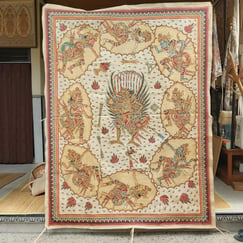Explore Kamasan Painting in Klungkung: Bali’s Timeless Artistic Heritage
Kamasan painting is one of Bali’s oldest and most culturally rich art traditions, rooted deeply in the island’s classical history and spiritual storytelling. Originating from Kamasan Village in Klungkung, this style predates many of Bali’s more modern art forms and continues to be practiced today by a small group of dedicated artisans who have inherited the craft through generations.
EAST BALI
The style is instantly recognizable. Flat, detailed, and narrative in nature, Kamasan paintings are typically created on cotton canvas or tree bark using natural pigments derived from stones, plants, and other organic materials. The scenes are usually based on Hindu epics such as the Ramayana and Mahabharata, as well as local folklore and Jataka tales. Each figure in the painting follows strict visual conventions—posture, expression, color, and ornamentation all carry symbolic meaning that helps the viewer understand the story being told.
Unlike more modern or decorative Balinese art, Kamasan painting was never created for beauty alone. It was developed to communicate values, preserve mythology, and visually narrate the teachings of Hindu philosophy. For centuries, this style was used to decorate temple ceilings, ceremonial banners, and palace walls—making it one of Bali’s most sacred and revered artistic expressions.
Visitors to Kamasan Village today can meet the few remaining painters who continue this intricate, meditative work. Many of them still follow the techniques of their ancestors, painting in quiet family studios and using materials prepared by hand. It’s possible to observe the process up close, ask questions, and even commission custom works that blend classical themes with personalized elements.
A visit to Kamasan offers more than just an art experience—it’s a journey into Bali’s living history. While other villages in Bali are known for woodcarving or contemporary painting, Kamasan holds a unique place as the guardian of a classical tradition that has shaped the island’s visual language for hundreds of years. Whether you're an art lover, a cultural explorer, or simply curious about Bali’s deeper layers, this village and its timeless paintings are well worth discovering.
